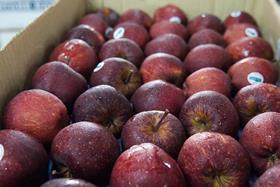
New Zealand’s apple industry has long seen India as a land of opportunity, but that potential hasn’t really been played out yet for the Southern Hemisphere supplier. Peak industry body Pipfruit New Zealand now plans to change that by helping to first change the very face of India’s apple market.
New Zealand was the source of the first apples imported to India in recent times. In 1999, when apples were taken off the country’s embargoed items list, Indian importer Yupaa International brought in the first shipment of apples from New Zealand’s then single-desk apple marketer Enza.
But now, around 12 years later, New Zealand only holds a fraction of India’s apple imports, with annual exports to the market of around 6,000 tonnes.
Part of the problem is the lack of widespread cold chains, which doesn’t mesh with New Zealand’s status as a premium apple supplier, and the Indian market’s strong preference for Red Delicious, which is only a minor variety in New Zealand.
In an effort to address both those issues and as a goodwill gesture and relationship building exercise, Pipfruit New Zealand (PNZ) now aims to help India’s apple industry with technology and knowledge transfers to growers there in an effort to develop the entire supply chain.
After a visit to India by New Zealand apple grower-exporters in September last year following Asiafruit Congress in Hong Kong, PNZ services manager Gary Jones visited Indian apple production in Himachal Pradesh in December. During the trip Mr Jones made a presentation at the Apple Fest conference – part of Agrotech 2010 – on opportunities for cooperation between the New Zealand and Indian apple industries.

“My aim at the Apple Fest was to explain what the New Zealand industry does from the production approach and the political-structural approach; how we get growers, packers and exporters to work together,” Mr Jones told Fruitnet.com.
The trip was the initial stage of PNZ’s plan to help India’s apple industry to modernise and increase productivity, the next step of which has been to invite Indian growers to New Zealand to see production and packing operations.
“I’m now organising a group of industry and government representatives to come out here from India, from Jammu and Kashmir, Himachal Pradesh and Uttarakhand,” Mr Jones explained. The Indian delegation will meet with several of New Zealand’s senior government ministers, talk with packhouse technology suppliers such as Compac, and visit orchards in Hawke’s Bay at the beginning of the season in February.
Mr Jones expected that delegation to be followed by several more back and forth between the two countries over the next year or two.
India’s average apple production currently stands at around 6 tonnes per ha, compared to New Zealand’s 55 tonnes per ha. PNZ has identified a number of key areas in the Indian apple production base it can help to improve, such as pruning and training, old orchard replacement and rehabilitation, integrated pest management and varietal change.
“Growers’ view of Red Delicious as the variety of choice is a major challenge,” Mr Jones stated. “There’s a real resistance to change…but some of the growers probably need to have a think about what the market is really after.”
Boosting the quality, consistency and volume of India’s apple growers will have flow-on effects for the market’s apple consumption and consumer tastes, said Mr Jones, which will in turn open the market to New Zealand’s suppliers.
“The Indian apple industry is quite large in terms of volume, but when you have 1.15bn people and a burgeoning middle class, the demand outstrips the supply even now,” he explained. “We want to reduce spoilage and improve the supply chain. That will grow demand, and being a counterseasonal country, it’s about having a relationship where we can supply in their off season.”
The chance of modest growth from the current 6,000 tonnes to 20,000-30,000 tonnes is good, he says, and will open up lots of new opportunities in India for New Zealand apples.
Further down the track, Mr Jones said there may also be opportunities for popular club apple varieties to set up production in India to complement counterseasonal supplies from New Zealand, although there are definitely challenges before that can be achieved.
“We’re prepared to grow this relationship over the long term,” Mr Jones stated. “There may be significant gains over time, and in the long term it will be beneficial to both industries.”



